News
It’s time for another set of Slovenian memes (or jazjaz, as some say) to provide short, amusing texts as an aid to language learning, with these images drawn from the Internet, made by anonymous creators, and perhaps of dubious legality due to the EU’s notorious "meme-killing" Article 13. Under each there’s a translation, and you can find other articles in this series here, while a good Instagram to follow is Slovenian Memes.
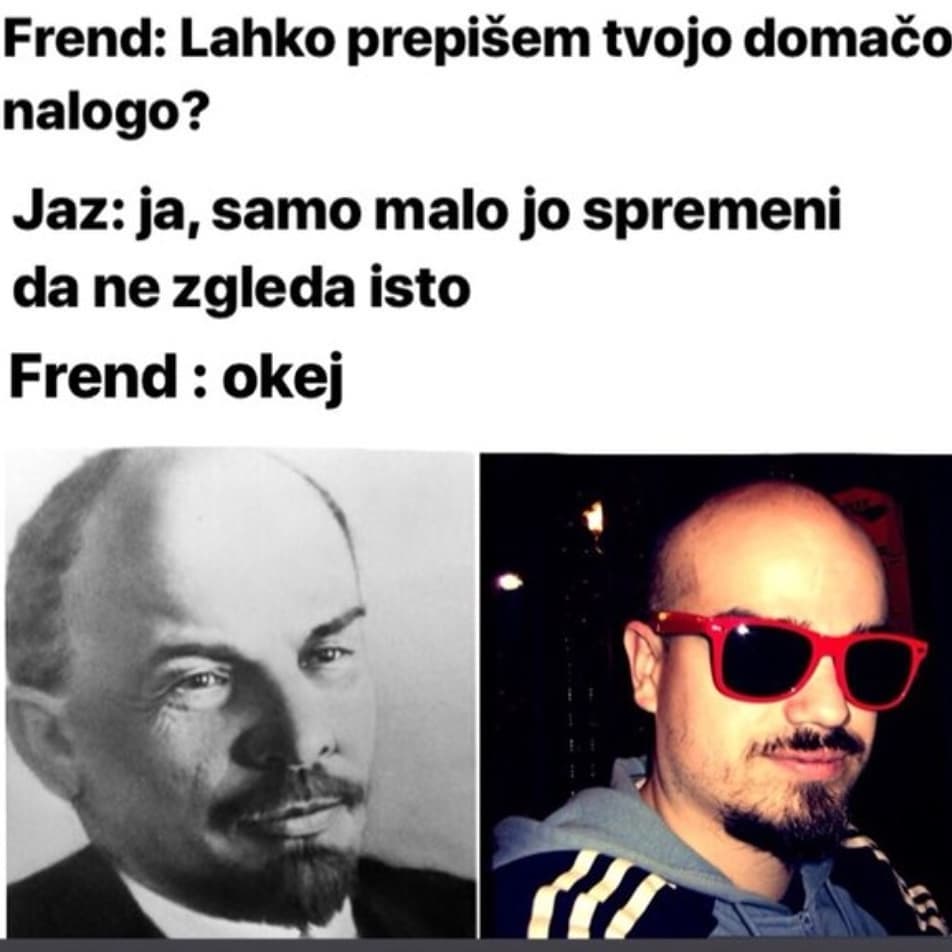
Friend: Can I copy your homework?
Me: Yes, just change it a little so it doesn’t look the same.
Friend: OK

The boy in the picture found a bag with $15,000 inside. He took the bag to the police. I hope that my child is not this stupid
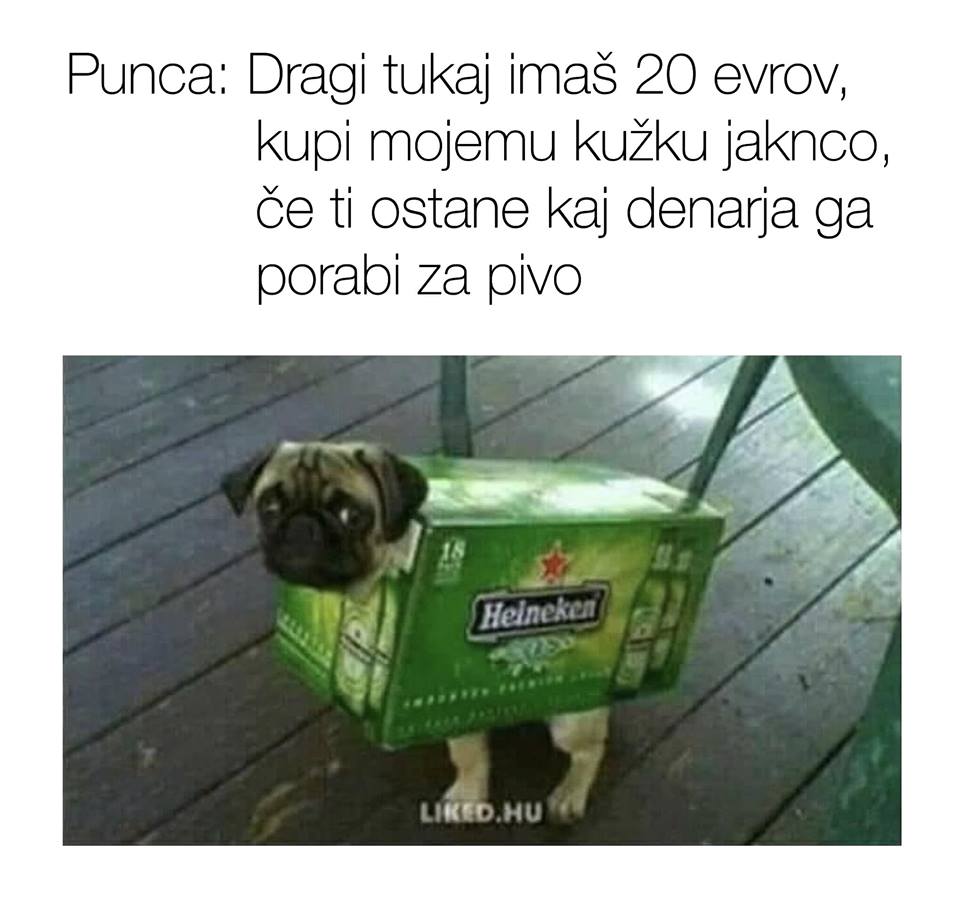
Girlfriend: Here's 20 euros to buy my dog a jacket, and if there's any money left over you can get some beer
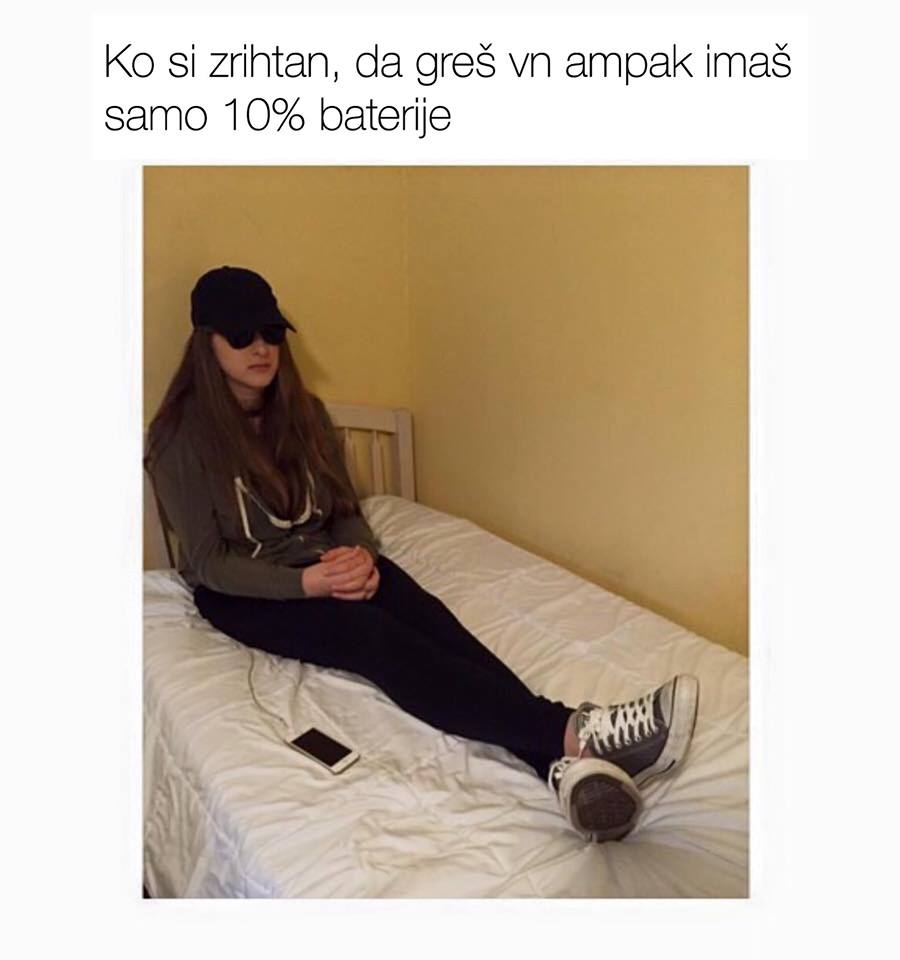
When you're all ready to go out but you only have 10% battery

When I'm hungry and walk to the fridge

When your friend starts telling the same story for the 100th time
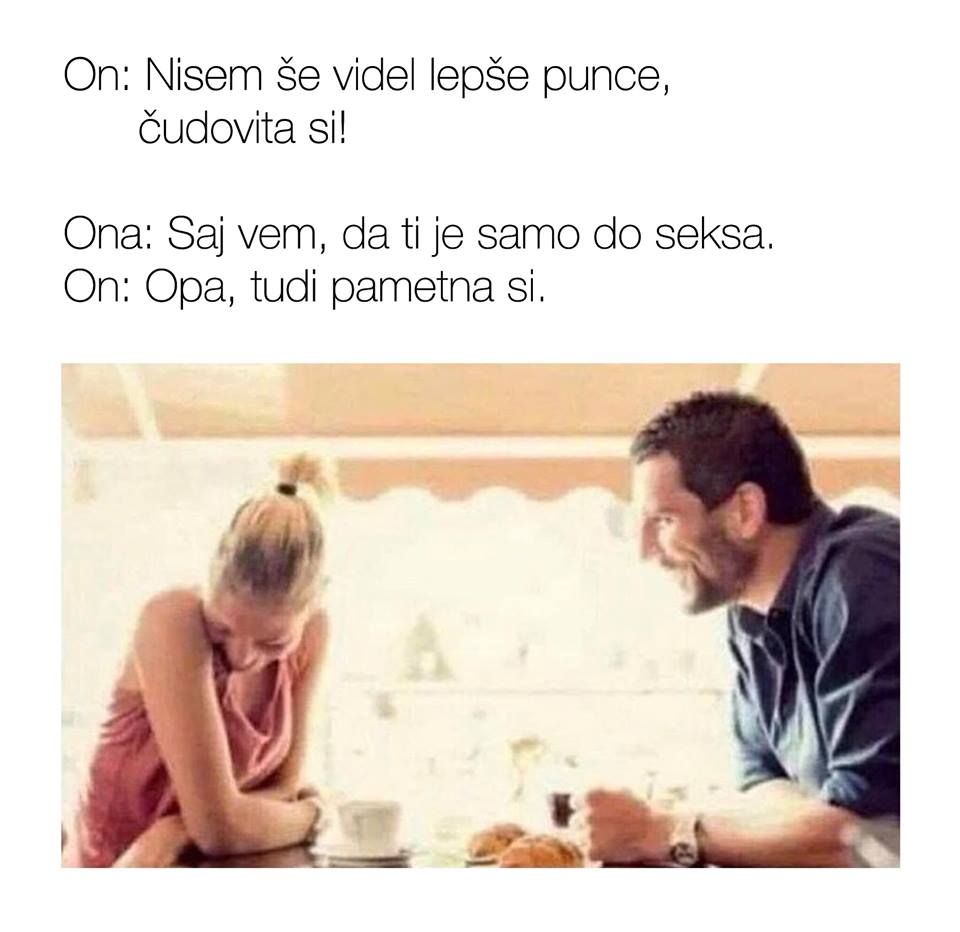
Him: I've never seen such a beautiful girl, you're wonderful!
Her: I know you're only after sex.
Him: Wow, you're smart, too.
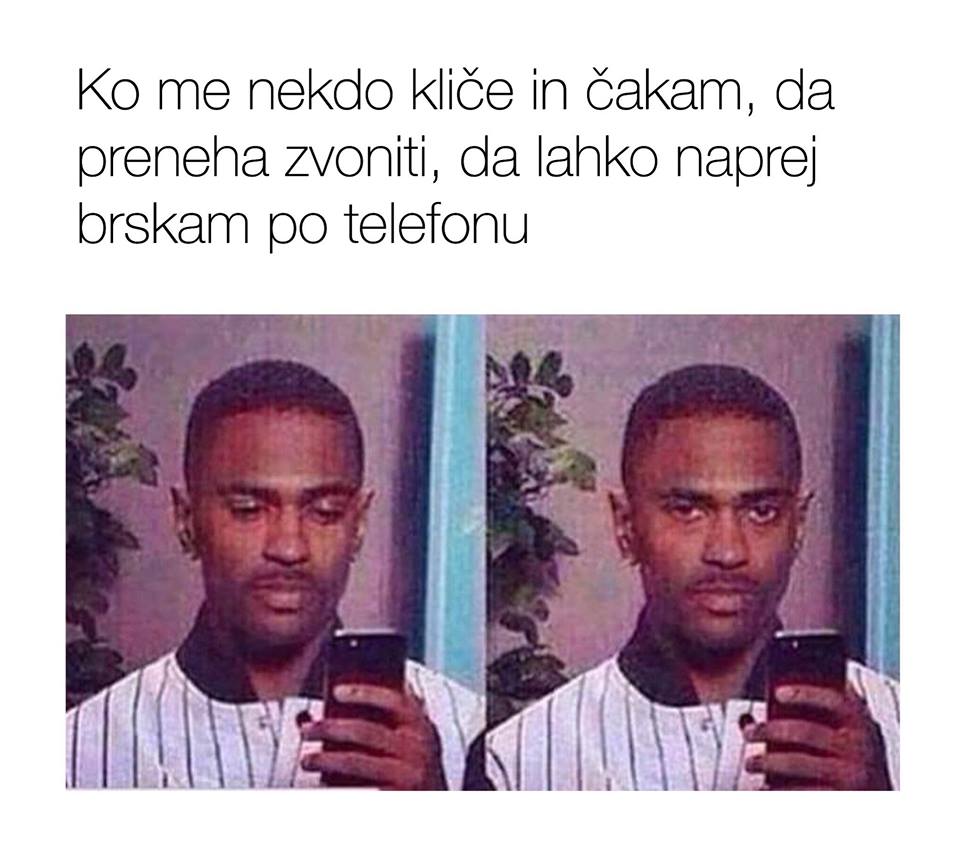
When someone calls and I wait until it stops ringing so I can continue browsing on my phone
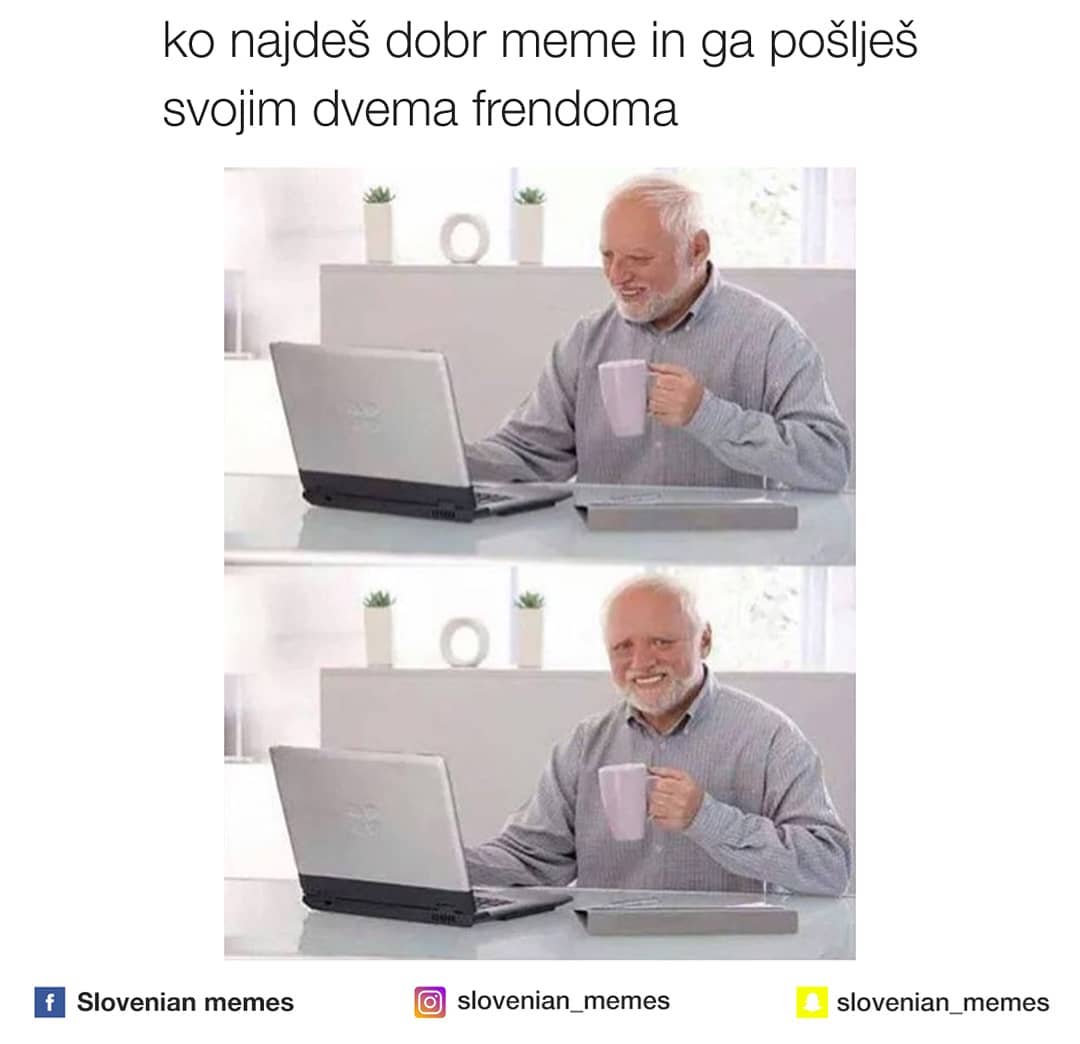
When you find a good meme and send it to a couple of friends
Ilka Štuhec, who tore a cruciate ligament in 2017 and thus missed this year’s Winter Olympics, is now back in full force on the slopes, taking first place at Val Gardena, Italy. The skier finished 0.14 seconds faster than Italy's Nicol Delago, and 0.51 ahead of Austria's Ramona Siebenhofer.
The win puts Štuhec in second place in the season's downhill rankings, with 158 points to the Austrian Nicole Schmidhofer's 226 points.
Overall the Slovene is 8th, with 202 points, far behind America's Mikaela Shiffrin, who has 689 points.
December 18, 2018
In 1970 actor the Stane Sever died in Ribnica on Pohorje.
Sever was a legend of the Slovenian theatre, television and cinema. He performed in many classics, including the first Slovenian talkie On Our Own Land (Na svoji zemlji), Good luck, Kekec! (Srečno, kekec!) and Vesna. In these movies Stane Sever played Drejc, a beggar and math teacher (Vesna's dad), respectively.
STA, 18 December 2018 - The number of jobs created in Slovenia increased to 885,700 in October with one in ten of the jobs filled by foreigners, fresh data from the Statistics Office show.
The number of people in employment in the country increased by 0.9% from November and by 3.2% on the same period a year ago.
More than half of those in jobs were men, their number rising by 0.8% from September to 486,600. The number of employed women rose by 1% to 399,000.
Manufacturing created most new jobs, the number of those employed there rising by 4.1% to over 8,000.
Almost 10% of all people in employment in Slovenia were foreigners. Their number rose by 19.5% in a year to 87,700. This is up 2% from September.
Most foreigner workers were from Bosnia-Herzegovina (42,600), Serbia (10,800), Croatia (7,500), Kosovo (7,100) and Macedonia (6,000).
Most were employed in the construction industry (23,400), manufacturing (20,300) and in transport and storage (14,800).
STA, 17 December 2018 - Prime Minister Marjan Šarec said during questions time in parliament on Monday that record keeping on foreigners in the country should be more detailed, so that foreigners will not be just numbers and that any abuse of the welfare system would be prevented.
Šarec was responding to a question by MP Zmago Jelinčič of the opposition National Party (SNS), who wanted to know how many foreigners are currently in the country, how many of them have working permits, where do they work and how many relatives each foreigner with a working permit has brought to the country.
Jelinčič said that by agreeing with the UN Global Compact for Migration Slovenia had opened the door wide to even more illegal migrants.
He said that one channel of illegal migration was Albanians coming to the country and the other were illegal migrants arriving through student or working visas, and shell companies.
Related: 1 in 8 residents of Slovenia is an immigrant
Data show that foreigners from Turkey, Pakistan and India are founding or buying companies with no employees in Slovenia, Jelinčič said.
The illegal migrants who come to the country either go further west or get a job, an address and request for social transfers, which they receive.
Jelinčič asked Šarec if he was aware of such abuses of the system and how the government plans to act against "this type of crime and illegal migration."
The prime minister presented official statistics, saying that 172,073 foreigners had a residence permit in Slovenia on 30 November, of whom 27,666 people were from the European Economic Area and Switzerland, and 14,407 from third countries.
According to the latest figures by the Employment Service, a total of 39,260 working permits have been issued this year.
The prime minister explained that not all citizens of third countries who live in Slovenia need an additional permit to get a job, start a business or work in Slovenia in addition to the work and residence permit.
He said that it was difficult to check whether a person actually lives at their address and that changes were absolutely needed here.
Related: The places where foreigners live in Slovenia and where they come from
"More will need to be done to keep good and accurate records, so that people will not be just numbers, which allows for abuses of the system, especially with welfare benefits," Šarec said.
On 30 November, the number of valid temporary residence permits due to family reunification stood at 11,692, Šarec said, adding that no records were kept on the family relations of the foreigners who receive temporary residence permits due to family reunification.
Šarec said that 18,600 foreigners received child benefits this year, which is 6.1% of all rightful claimants.
Jelinčič said that the UN spoke of 244,800 migrants in the country and the OECD of 340,000 people who were not born in Slovenia, so he proposed a parliamentary discussion on the issue. The National Assembly will decide on this on Wednesday.
STA, 17 December 2018 - A report on Slovenia's EU funds drawing commissioned by former Minister Marko Bandelli, who was forced to resign in November, points to serious issues at the Government Office for Development and European Cohesion Policy that could cost the country up to EUR 68m in EU funds.
Bandelli ordered a new report after his team found irregularities in the old report, reads an attachment to the report, which was initially planned as public but was sent to Prime Minister Marjan Šarec separately after the Alenka Bratušek Party (SAB) and Šarec agreed on Bandelli's successor.
The leaked document, obtained by the STA, points to irregularities such as discrepancies between the data on the drawing of EU funds available to the public and those available to his office.
IT seems to be one cause of the problem
The government office has had issues with the information system for some time now, but Bandelli's team said in the document that the trouble with the system, which has compatibility issues with the IT system at the Finance Ministry, was such that "it poses a serious threat that Slovenia will (permanently) lose the awarded funds for the first time this year".
Slovenia has to use the EU funds earmarked for the country until 2015 by the end of this year. According to Development and European Cohesion Policy Office State Secretary Nevenka Ribič, Slovenia could lose around EUR 68m because of the issues.
"I hope we'll bring the figure to zero on time, but I cannot make any promises. We're working on it," she said, adding that it had appeared at first that more than EUR 180m were at risk of being lost.
Moreover, the leaked document says that the office was not quick enough in tackling the issues in the previous term, when it was led by Alenka Smerkolj.
According to the document, an audit carried out by the company KPMG unveiled these issues, but the office failed to act on it.
On the other hand, Igor Lakota, the deputy government secretary-general who headed Smrekolj's cabinet in the previous term, told the STA on Monday that the report did not paint a realistic picture.
There have been issues, he acknowledged, but the audit by KPMG led to Smrekolj finding a new contractor for the IT system, which managed "to resolve some of the key issues we had".
In turn, the payments mainly started in September, and Lakota says that only EUR 19m in EU funds are still under threat at the moment, but that these claims are to be sent to the Finance Ministry, "so all the funds will be taken care of".
Lakota may be fired and investigated by the police over irregularities
Moreover, Lakota and three other employees of the office in the previous term, point fingers at the previous government's decision to keep the office and the Finance Ministry on separate IT systems instead of using a single one.
"This has led to a very complicated system ... for the ministries and the end uses of the funds," they said in a response to the document they sent to Šarec, who is reportedly seriously considering letting Lakota go.
Commercial broadcaster POP TV reported that Lakota is a person of interest in two investigations related to his stint at the office, with the police investigating the IT system and connected public procurement, and the public inspectorate investigating alleged irregularities with which Lakota increased his monthly earnings by around EUR 600.
STA, 17 December 2018 - Swiss group Kuehne + Nagel inaugurated on Monday one of its largest pharmaceutical logistics centres near Ljubljana's international airport. The 88,000 square-metre complex, which was launched earlier in the autumn, has almost 38,000 square metres of warehouse space.
Kuehne + Nagel did not reveal which company it is servicing, but it is known this is Swiss multinational Novartis, for which this is the largest warehouse in Europe and one of the largest in the world.
The centre is designed for storing and distributing end products and materials for the pharmaceutical industry around the world. Drugs from it travel to 120 countries around the world, mostly by sea and land, but some also by air.
The centre is currently operating at some 70% of its capacity, but should be in full swing by the end of March.
As the Swiss logistics group expects further growth in Slovenia, it has already started building a new high-tech distribution centre nearby.
The centre will be built in three stages, with the first one encompassing some 4,500 square metres of warehouse areas.
Since it does not require controlled temperature and humidity, it is seen as less demanding than the pharmaceutical complex.
Borut Vrviščar, the CEO of Kuehne + Nagel Slovenija, did not want to disclose the value of the investments as he addressed reporters today.
But he did say the group's Slovenian subsidiary planned two-digit growth as well as growth in the number of employees.
There are currently 180 employees working in Brnik, but the figure is expected to rise to around 250 by the end of 2019.
Well-trained and motivated staff part of the appeal of Slovenia
Hansjoerg Rodi, regional manager at Kuehne + Nagel Europe, said that well-trained and motivated staff made Slovenia a good market for investments.
He explained Kuehne + Nagel had decided to invest in the Brnik facility because of a certain deal, but the group now saw new opportunities for growth in the pharmaceutical industry and in other areas, so it kept investing.
Meanwhile, Vrviščar said a new logistics centre Austria's Cargo-partner is building near Kuehne + Nagel's complex was no direct competition as the Austrians were involved in a different segment of the logistics industry.
However, he said they would all benefit from the Slovenian government building a rail link to Ljubljana's Jože Pučnik Airport.
Kuehne + Nagel's new facilities are built by Austria's developer Invest4See and then rented by the Swiss logistics group.
Below is a review of today’s news in Slovenia, summarised by the headlines in the daily newspapers for Tuesday, December 18, 2018, as prepared by the STA:
DELO
Firecrackers
"I don't throw firecrackers, I still have all my fingers": Increasingly many teenagers are among the victims of New Year's explosions. Firecrackers are banned in Slovenia, but can be bought on-line. (front page, 7)
Cinkarna Celje
"Despite profit they are looking for ways to postpone Christmas bonus": A group of employees staged a rally at the chemical company Cinkarna Celje over Christmas bonuses which the management seems reluctant to pay out. (front page, 11)
Central governor appointment
"D Day for governor tomorrow": The National Assembly will decide tomorrow whether the central bank will get a new governor after the post has been vacant for more than six months. (front page, 10)
DNEVNIK
Elderly
"Higher minimum wage, costlier retirement homes": Managements of retirement homes are making calculations these days as to what higher minimum wage will mean for their budget. (front page, 3)
Anti-government protests in Hungary
"Hungary: Protests against the government of Viktor Orban getting fiercer": An anti-government rally was held in Budapest yesterday, which was the sixth day of protests against new labour legislation which the protesters call enslaving. (front page,6)
Education
"Dean earning extra monthly pay with overtime work": Documents obtained by the paper show that the former dean of the Faculty of Administration, Srečko Devjak, earned at least EUR 400,000 with overtime work in ten years. (front page, 2)
FINANCE
Health
"Poor results of hospital bailout": A year since the big bailout of hospitals, hospitals' losses are even bigger and savings smaller, the paper says. (front page, 2-3)
Minimum wage
"Will raising minimum wage really lead to general pay raise?": Statistics show that the long awaited wage growth started in 2018 and is expected to continue in 2019, also because of higher minimum wage. (front page, 4-5)
Digitalisation
"Why Volvo is urging users not to buy their car": Car maker Volvo has launched a campaign urging customers not to buy their car but to subscribe for a package to the likes offered by Netflix or Spotify. (front page, 9)
VEČER
Firecrackers
"Dangerous cracking": The sales of pyrotechnical products primarily designed to produce a large amount of noise will start tomorrow. (front page, 2, 20-21)
Government
"Hundred days of rest(lessness) for the government": The ratings of the Marjan Šarec are going up, but the cabinet faces tough challenges such as the health and pension reforms and a fragile system of national security, the paper says. (front page, 2-3)
Sport
"Flisar wants real races": Slovenian freestyle skier Filip Flisar did not make it pass qualifications at the season opener but he says the result did not reflect the actual situation. (front page, 22)
Maruša Štibelj was among around 600 artists from around the world featured in this year’s Le Salon des Beaux Arts exhibition, along with 11 others from Slovenia. While to be shown alone is a considerable honour, Štibelj went one step further and received a jury award in the painting category for the following collage, Chronically Late.

© Maruša Štibelj
You can see more of the artist’s work below, and at the end of the page there are also links to her webpage and Instagram, so you can see even more.
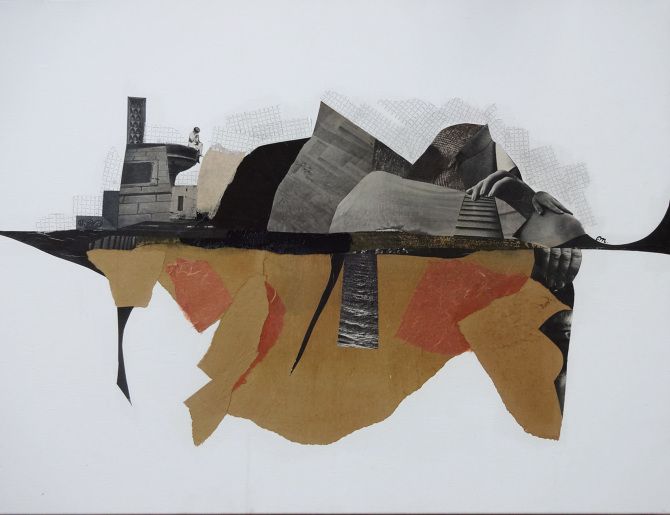
© Maruša Štibelj
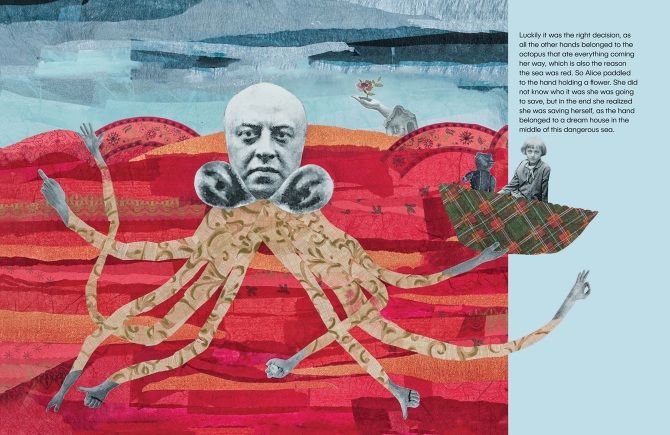
© Maruša Štibelj
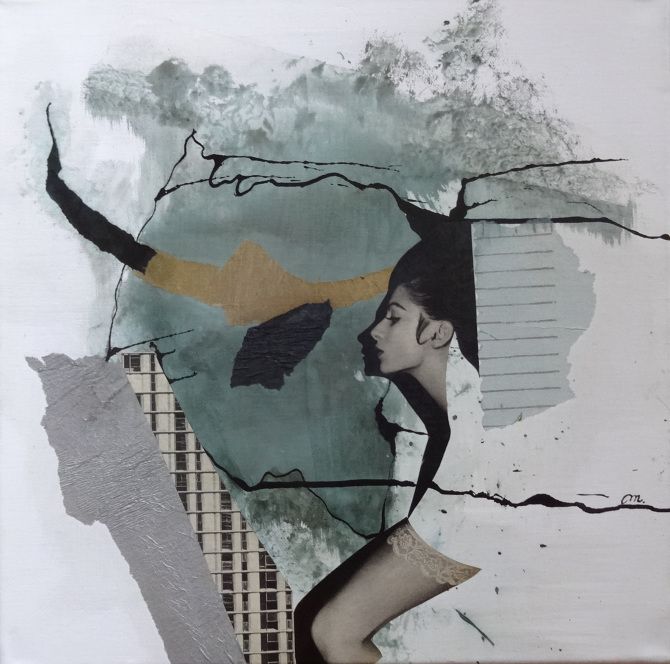
© Maruša Štibelj
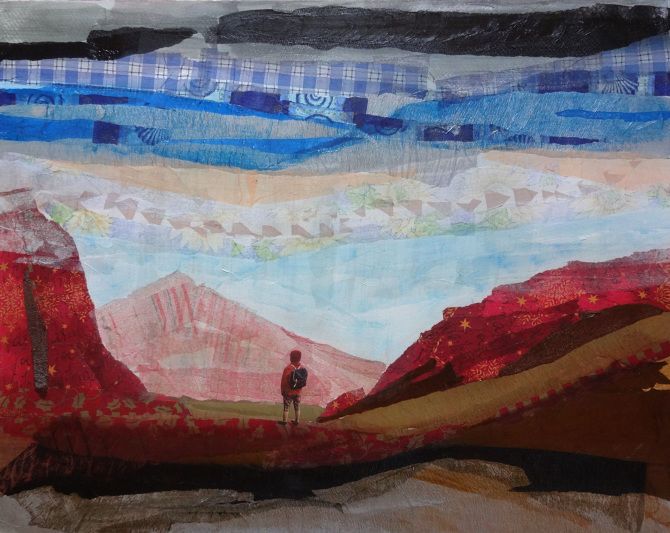
© Maruša Štibelj

© Maruša Štibelj
Maruša Štibelj’s website is here, and her Instagram is here.
The assumed audience for TSN isn’t only English native speakers, but anyone with an interest in Slovenia who can’t yet understand the local media, as well as Slovenes who’re interested in a different perspective on the land they call home. We thus leapt at the chance to visit the Balassi Institute in Ljubljana (Balassijev inštitut Ljubljana - Balassi Intézet), the Hungarian cultural centre not far from Dragon Bridge, to carry out some interviews and learn more about how people from just over the border might see life here.
The first of these, presented below, is with Éva Schwetter, a language teacher who’s lived in the capital for seven years, and is working to enhance relations and understanding between these two neighbouring states.
What brought you to the Institute?
I was as a guest teacher at the university in Ljubljana for six years, but I was also teaching here, so when the university job ended I started working at the Institute most of my time. It opened in January 2016, and I’ve been teaching Hungarian since a few months after that.
Now I have around 30 students in five groups, both at the Balassi and SAZU. Quite often there are researchers, and what they’re interested in crosses over the border into Hungary, and that’s where I can help.

One of the many and varied activities at the Balassi Institute
Who takes the classes here?
We get all ages, and sometimes they’re just interested in the language, but usually it’s because they have some connection, a boyfriend, girlfriend, or maybe some family history with Hungary. So we have classes for beginners, but also for those who already speak good Hungarian and still want to practice and improve.
The classes are open to everyone, although there’s a fee. The first semester starts in October and the second in February, sometimes in March, with a beginners group in each. I teach the beginners in Slovene, but over time, as the students learn more, I use more Hungarian. I have one group who’ve been coming for five semesters, and now it’s almost completely Hungarian.
How different is Slovene to Hungarian?
It’s a totally different language family, Finno-Ugric, so the structures and logic are not at all the same. Hungarian is very logical, but it has its own logic, and it usually takes two or three semesters to get into it.
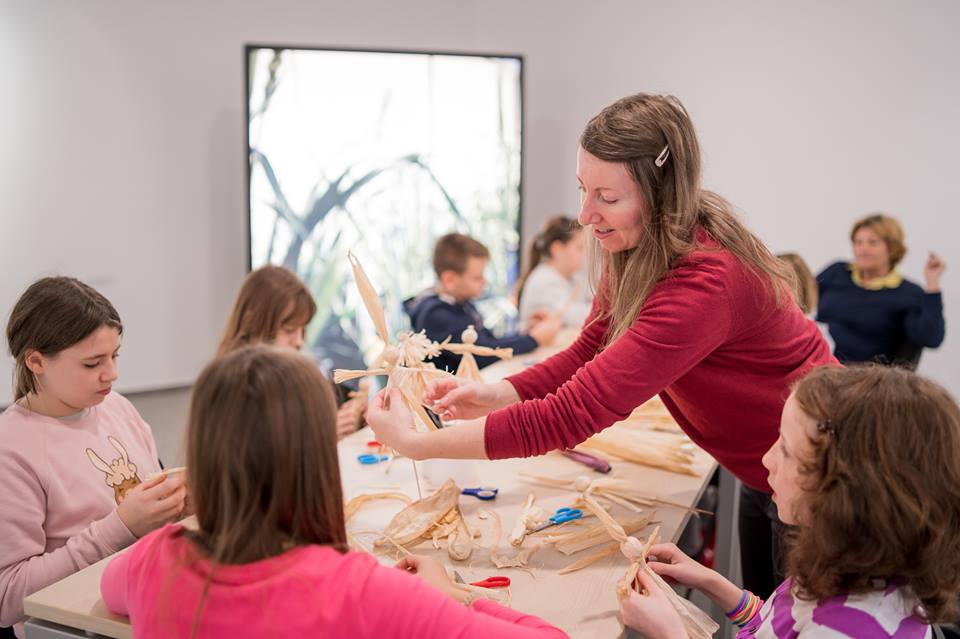
The Balassi Institute
What else is difficult?
Most people say it’s the vocabulary, which is very different to anything they’ve seen before. It’s even different to Finish and Estonian, other Finno-Ugric languages, because they’ve been separate for 3,000 years. So it’s not like Italian and French, but more like French and Persian.
Hungarian also uses a lot of suffixes, and that’s new for most people. What would be a structure in English or Slovenian is one word in Hungarian, but with two or three or four suffixes. It’s like Lego, and you just keep adding things, not taking away.
So in my experience, and that of my students, it’s difficult to start, but then it gets easier, and with the writing it’s written how it sounds. As a written language Hungarian has a long history, going back about a thousand years. First runes, then from around 1000 AD we implemented the Latin script at the same time as the formation of the Hungarian Christian Kingdom.
Has your experience as a learner of Slovene made you a better teacher of Hungarian?
I think so, yes. A lot of Slovenians are scared of Hungarian because of all the differences, but the problems go both ways, and when they see that I can speak Slovene then they know it’s not impossible. At first I spoke very little Slovenian in class, and I told the students to be patient, but they really appreciated my efforts, and it also helped when they faced difficulties in speaking Hungarian. Plus I think the relationship between a teacher and student is helped when both sides see the effort being made.
The new textbook that Éva worked on
You recently worked on the first textbook specifically for this market, Hungarian for Slovenians. Can you tell me a little about that?
Well, after working here for some years I knew the problems that students have with certain things, and that made writing the book easier. So that experience has gone into the book, and of course if something is very similar, or very different, between the two languages we emphasize that. We also focus on the common words. There are about 500 or so of those, which have Slavic roots in the both languages.
Does Hungarian have the dual?
Not like in Slovene, but we do have a special case for when I (first person, singular) am doing something to the second person (singular or plural), like if I see you, I call you, I love you.. And we don’t have gender, so all those declensions don’t exist. There are also things like two conjugations, depending on whether the object of the verb is definite or indefinite – I see the book or I see a book.
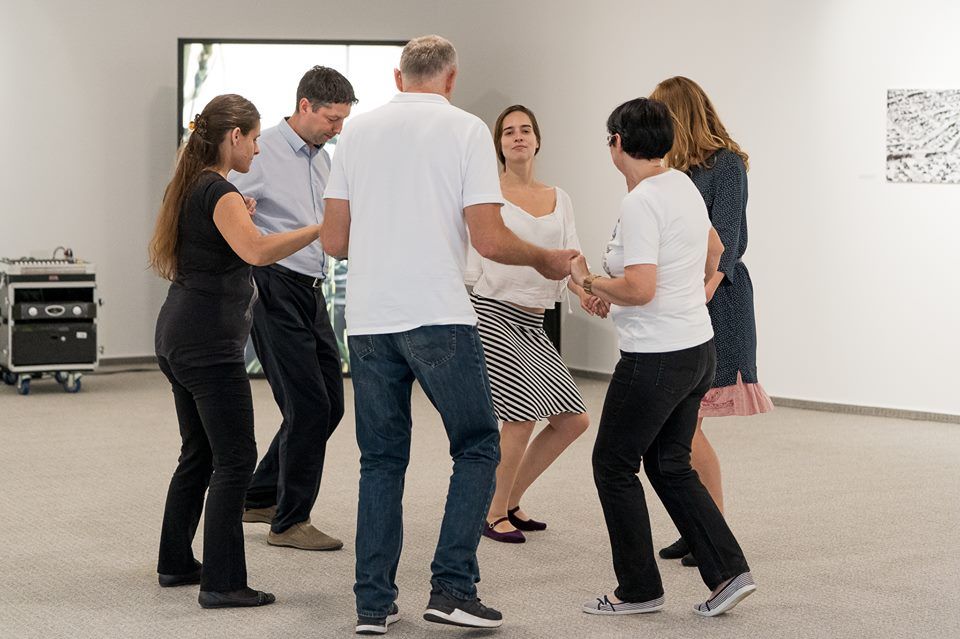
The Balassi Institute
What’s difficult for you in learning Slovene?
For me the gender is difficult, because we don’t have this in Hungarian, and all the combinations of singular, plural and so on, but today I can of course read newspapers, watch TV and give a class.
What surprised you about life in Slovenia?
Ljubljana is a small town, and that was a shock to me, after Budapest. And it surprised me how much people value their private time, so the busiest time on the road is after 3pm, as people leave work from then on. Also, if I send an email in the evening or over the weekend then I can’t expect a reply until they’re back at work, which I respect and understand, but it was still a shock.
I was also surprised by how much English people speak here, especially in Ljubljana. Of course, that makes things easy, but it’s also frustrating when you start using the language, because when you pause and try and think of a word people often just start talking in English.
Finally, I think Slovenes are more direct than Hungarians. For example, when Hungarians send emails they will say a lot, and not just get to the point. But here people will just ask for something, no polite forms, just business. So this offended me at first, but now I think it saves time and I also send these kind of messages.
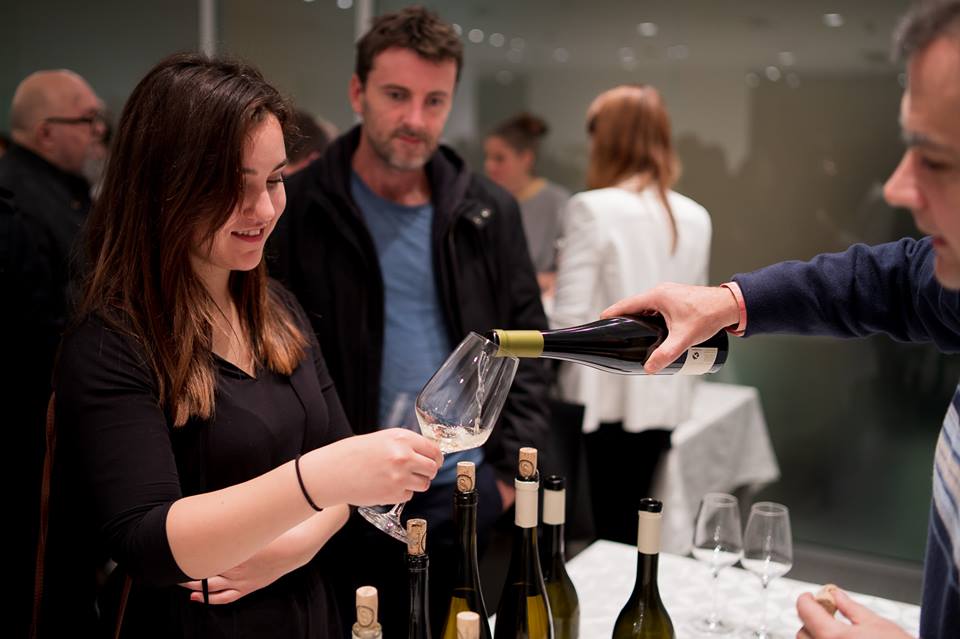
The Balassi Institute
What about food and drink?
It’s really not that different, but we were part of the same Austro-Hungarian Empire, so maybe that’s not so strange, and a lot of the food in Prekmurje is the same as just over the border, with even the famous gibanica being very similar to the Jewish cake flódni, which is well known in Hungary. One thing that’s different, and maybe interesting to your readers, is bograč. In Hungarian this is the thing you cook in, like a cauldron, say, but in Slovenian it refers to the food inside, like a goulash.
Do you think you'll stay in Slovenia?
I love it, I feel integrated, and my life is here. After seven years I can’t imagine leaving, so I want to stay as long as possible. Learning Slovenian helped a lot, of course, because speaking the language opened some doors that had always been closed to me. And Ljubljana, where I live, is beautiful, clean, and friendly. When there’s a problem the attitude seems to be let’s solve it together, and I like that.
You can learn more about Éva Schwetter’s work at the Balassi, and perhaps attend an event if you don’t take a course, by visiting the institute’s homepage or Facebook, or just going in person next time you’re in town.
STA, 14 December 2018 - The Council of Europe and UNESCO are urging against violence towards lesbian, gay, bisexual and/or transgender individuals at schools in their latest report, which shows that in Slovenia 43% of young people were subject to this type of violence in 2014.
This can be psychological, physical or sexual violence that happens on school grounds and also on-line. Its most frequent forms are verbal violence and harassment, the CoE says in the report.
Such violence targeting members of the LGBTI community was detected in all CoE countries, most notably in Turkey (67%) and Belgium (47%).
In the section on the situation in Slovenia, the report refers to a 2013 research carried out by the EU's Fundamental Rights Agency.
The survey showed that 59% of the 636 lesbian, gay, bisexual and transgender persons "always" or "frequently" heard negative remarks about their classmates' sexual orientation or sexual identity and 30% of them are "always" or "frequently" the targets of such remarks themselves.
All our stories tagged LGBT can be found here
The report also refers to the 2014 survey in which 42.8% of respondents aged between 15 and 30 years reported of at least one experience of a homophobic attack during their education.
Slovenia is among the 32 CoE members that have explicitly banned discrimination based on sexual orientation at schools and is one of the 24 CoE countries that have explicitly banned discrimination based on sexual identity in education.
In 2016, the Slovenian anti-discrimination legislation expanded the list of the types of discrimination banned to discrimination based on sexual identity, while discrimination based on sexual orientation is banned by the Constitution.
The report released on Thursday is based on responses of public sector employees from 35 CoE member states.
The full report, in PDF form, can be read here






